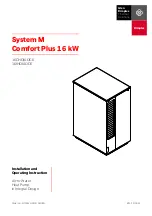
2
Installation and Setup
Liquiflo FTS Transfer Pump User Manual
Series No. FTS300
7
Pump inlet and outlet connections
For any nozzle loading concerns, contact Liquiflo
FTS Application Support; see page 3 of this
manual for contact information.
CAUTION
When making flange
connections, be sure that all
flanges are sealed with the
proper gasket or seal for your
application, and that all
fasteners have been tightened
to the appropriate torque setting.
When making threaded
connections, be sure that all
threads are sealed with the
proper sealing compound that is
appropriate for your application.
Ensure that the suction piping is correctly
submerged below the surface of the fluid
– while
the pump is able to self-prime and is capable of
providing suction lift in accordance with the Pump
Data Package, the suction inlet must not be
partially submerged or too close to the surface as
the high flow of the Transfer Pump will disturb the
fluid surface and prevent proper operation.
It is recommended that suction and discharge
pressure gauges be installed at the inlet and outlet
locations.
Do not suspend the Transfer Pump by its flanges
– it should be securely mounted to the floor
or other suitable surface according to Section 3, Installation and Setup, Installing the Transfer
Pump. Do not draw piping into alignment with the flanges with excessive force
– this will put
unsafe strain on the Transfer Pump. Do not allow flanges to support the weight of the piping
–
ensure that all piping is properly suspended or supported independently of the Transfer Pump.
CAUTION
DISCHARGE FLANGE DETAIL
ANSI 150 3”
4X 5/8” –
11 UNC
THREADED HOLES
SUCTION FLANGE DETAIL
ANSI 150 3”
3” NPTF
3” NPTF
4X Ø.75
THRU HOLES
9.76
18.09
12.05
15.03
5.78
6.44
5.19







































